Description
Hydromorphone Shortage: Causes and Effects
The hydromorphone shortage is impacting pain management due to manufacturing delays & high demand, forcing healthcare providers to seek alternative treatments.
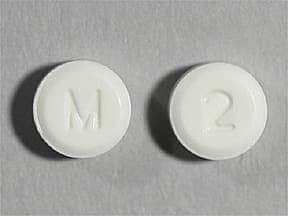
Hydromorphone is a powerful opioid used to treat moderate to severe pain in medical settings.
Doctors prescribe it when other painkillers are no longer effective.
This medication works quickly by targeting pain receptors and reducing the brain’s perception of pain.
Hospitals use it after surgeries or for advanced illnesses that require a more powerful painkiller.
Due to its efficacy, this medication is monitored and prescribed with caution to prevent abuse.
Current Hydromorphone Shortage
Hospitals and pharmacies in the United States are facing ongoing hydromorphone shortages through 2025.
Production delays and supply chain disruptions are limiting the availability of hydromorphone nationwide.
Pharmaceutical manufacturers are struggling to maintain production due to manufacturing issues and shortages of raw materials.
Healthcare providers face significant challenges in obtaining this essential pain reliever for patients.
Causes of the Hydromorphone Shortage
Several manufacturers are halting production, limiting the availability of hydromorphone across the country.
Supply chain disruptions are causing shipping delays and reducing the supply of hydromorphone to pharmacies.
Raw material shortages are disrupting hydromorphone production at global pharmaceutical companies.
Plant closures for inspections are further delaying the production and delivery of hydromorphone to hospitals.
FDA regulations are increasing production restrictions, reducing opioid production in many locations.
Increased oversight of opioids is slowing the approval process for hydromorphone production and distribution.
Impact of the Hydromorphone Shortage on Healthcare
The hydromorphone shortage is impacting pain management in hospitals, clinics, and emergency departments.
Patients are experiencing delays in pain management due to the unavailability of hydromorphone during emergency procedures.
Physicians spend valuable time searching for alternative opioids or pain medications for their patients.
Pharmacists contact multiple suppliers daily to find and secure limited supplies of hydromorphone.
Nurses struggle to ensure consistent pain management for patients who require fast-acting opioids.
Effects on Pain Patients
Chronic pain patients experience emotional distress as they struggle to obtain their usual hydromorphone prescriptions.
Sudden medication changes lead to new side effects or withdrawal symptoms in susceptible patients.
Patient pain management becomes inconsistent during emergency opioid changes.
Again, Patients call multiple pharmacies in vain to obtain their hydromorphone prescriptions.
Some patients’ health deteriorates due to delayed or ineffective pain management.
Hydromorphone Shortage in Palliative Care
Palliative care providers struggle to ensure the comfort of patients at the end of life.
Also, Palliative care centers are unable to consistently provide hydromorphone treatments, compromising pain relief for terminally ill patients.
Family members report distress as they witness their loved ones suffering from untreated or fluctuating pain.
Hydromorphone shortages disrupt comfort care strategies designed for patients with serious or terminal illnesses.
Alternatives to Hydromorphone
During this nationwide shortage, doctors are prescribing morphine, oxycodone, or fentanyl as alternatives to hydromorphone.
Morphine causes nausea or itching, making it less attractive to some patients.
Oxycodone is less potent and requires higher doses for patients with high opioid tolerance.
Fentanyl is very potent and requires careful administration under close clinical supervision.
Each alternative has specific side effects, dosage risks, and concerns about patient tolerance.
Doctors carefully titrate doses to minimize side effects and maintain safe pain control.
Hydromorphone Shortage and Hospitals
Hospitals are developing emergency guidelines to manage hydromorphone shortages with minimal impact on patient care.
Medical teams are monitoring opioid inventory daily and scheduling dose substitutions for scheduled treatments.
Committees are reviewing patient records to determine who needs hydromorphone most.
Emergency departments are treating pain with non-opioid or combination therapies when opioids are not available.
Hospitals are relying on internal communications to ensure opioid management during the hydromorphone shortage.
Hydromorphone vs morphine
Hydromorphone acts as a potent opioid and provides rapid relief for patients with severe or breakthrough pain.
Morphine acts more slowly, allowing for consistent pain relief over longer periods in many clinical settings.
Doctors prescribe hydromorphone in lower doses because it is more effective than morphine.
Morphine requires higher doses to achieve the same level of pain relief as hydromorphone.
Patients often respond more quickly to hydromorphone because it begins working after 15 minutes.
Morphine takes longer to work; its effects usually occur after 30 to 60 minutes.
Hydromorphone wears off more quickly and lasts only a few hours after each dose.
Morphine, on the other hand, provides longer-lasting pain relief, lasting 4 to 6 hours.
Both drugs are administered by various routes, including oral, intravenous, and subcutaneous.
Hydromorphone is also used in extended-release forms for patients who need continuous pain relief.
Doctors prefer hydromorphone for kidney problems because it produces inactive waste products.
Morphine generates active metabolites that accumulate in patients with renal failure, leading to harmful side effects.
Hydromorphone causes fewer allergic reactions because it releases less histamine than regular morphine.
Morphine is more often associated with itching and low blood pressure because of its higher histamine response.
Patients continue to experience typical opioid-related problems, such as constipation and drowsiness, regardless of their treatment.
Hydromorphone is preferred when a stronger, faster-acting effect is needed to treat severe pain attacks.
Pharmacy Strategies for Addressing the Hydromorphone Shortage
Pharmacies are rationing their hydromorphone inventory based on patient condition and prescription priority.
Inventory managers are monitoring supplier availability and vetting multiple suppliers for access to hydromorphone.
Some pharmacies are alerting patients to anticipated delays and recommending follow-up medical care.
Community pharmacists are experiencing increased workloads due to calls and questions about hydromorphone inventory.
How hydromorphone works
Hydromorphone interacts with opioid receptors in the brain and changes pain perception.
It continuously binds to mu-opioid receptors and actively reduces the transmission of pain signals to the brain.
This drug also affects emotional responses, allowing patients to better tolerate pain without discomfort.
Hydromorphone gradually slows down certain brain functions and calms the activity of the nervous system associated with pain perception.
It suppresses the cough reflex and often provides sedation by acting on brainstem centers.
At high doses, hydromorphone actively inhibits breathing, which requires close monitoring in many clinical situations.
It sometimes creates a feeling of euphoria, which increases the risk of abuse and addiction.
After administration, the drug begins to work within minutes by injection or within about an hour when taken orally.
The analgesic effect usually lasts for several hours, although extended-release forms remain effective much longer.
Hydromorphone Shortage and Mental Health
Patients report symptoms of anxiety and depression due to sudden interruptions in their pain medications.
Caregivers experience emotional exhaustion from watching their loved ones suffer without reliable opioid relief.
Physicians refer patients to therapy or counseling when pain and stress become overwhelming.
Mental health professionals are seeing an increase in cases related to chronic pain and opioid withdrawal.
Hydromorphone Shortage and Medication Safety
The hydromorphone shortage is forcing some patients to try unfamiliar opioids with uncertain effects or interactions.
Rapid medication changes increase the risk of overdose, complications, or harmful drug combinations.
Health care providers emphasize medication safety education before switching patients to new pain treatments.
Pharmacies offer printed guides about hydromorphone substitutes and their potential risks.
Hydromorphone Shortage and Opioid Management
Physicians are prescribing more cautiously due to the hydromorphone shortage.
Hospitals are tightening their opioid management policies to ensure that only patients with high needs receive hydromorphone.
Physicians are using multimodal pain management methods, such as nerve blocks or physical therapy, to reduce opioid dependence.
Pain management teams are thoroughly evaluating patients before initiating or continuing opioid treatment.
Hydromorphone shortage and training
Medical schools are updating their training to prepare new physicians for drug shortages and substitution strategies.
Faculty are teaching balanced pain management techniques without overuse of potent opioids.
Pharmacists are receiving ongoing training in managing hydromorphone shortages.
Professional associations are sharing guidelines for prescribing during an opioid supply crisis.
How patients can respond
Patients should contact their physician immediately if they do not have access to prescribed hydromorphone.
Physicians can suggest alternative medications or adjust dosages to relieve pain without serious side effects.
Patients should contact the pharmacy in advance to verify the availability of hydromorphone before coming.
Support groups can assist patients who have problems with pain and access to medications.
Preventing Future Hydromorphone Shortages
Drug manufacturers must improve supply planning to prevent sudden hydromorphone shortages.
Governments must invest in domestic pharmaceutical production of essential opioids.
Healthcare systems need better forecasting tools to anticipate and effectively manage drug shortages.
Early warnings must be shared with hospitals and pharmacies before supplies become dangerously low.
Industry collaboration is essential to improve long-term access to pain medications like hydromorphone.
Conclusion
The hydromorphone shortage is severely and permanently disrupting pain management across the country.
Despite available alternatives, many patients are experiencing complications, delays, or emotional distress.
Healthcare systems are adapting through new policies, awareness, and improved opioid management.
Collaboration between governments, healthcare providers, and manufacturers is critical to the long-term safety of medicines.
Together, we can build a stronger, more reliable approach to pain management and opioid access.
FAQ.
1. What is hydromorphone?
A powerful opioid painkiller used to relieve severe pain and sold under brand names such as Dilaudid.
2. How does Hydromorphone work?
It binds to opioid receptors in the brain and spinal cord to block pain signals.
3. What forms does Hydromorphone come in?
Tablets, liquid, injections, and extended-release tablets.
4. What are the most common side effects of Hydromorphone?
Nausea, drowsiness, constipation, dizziness, and dry mouth.
5. What are the serious risks?
Respiratory failure, addiction, overdose, and dangerous drug interactions.
6. Who should not use hydromorphone?
People with breathing problems, bowel obstruction, or opioid allergies.
7. Can Hydromorphone cause withdrawal symptoms?
Yes, stopping abruptly can cause severe withdrawal symptoms.
8. How is an overdose treated?
Naloxone (Narcan) reverses the effects of an overdose; call 911 immediately.
9. Is hydromorphone more potent than morphine?
Yes, it is 5 to 7 times more potent than morphine.
10. How is Hydromorphone used safely?
Use only as directed, never share, and keep in a safe place.

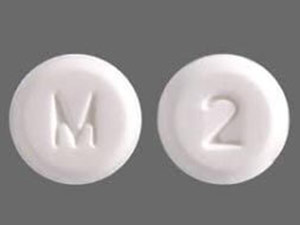
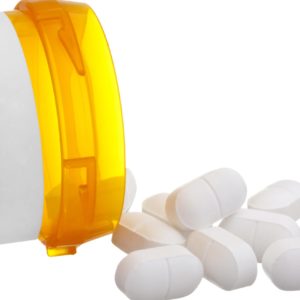
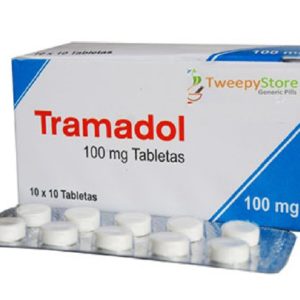
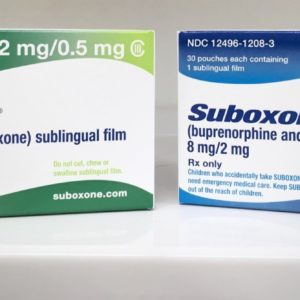
Tobias Amelina –
Very impressed with this purchase.